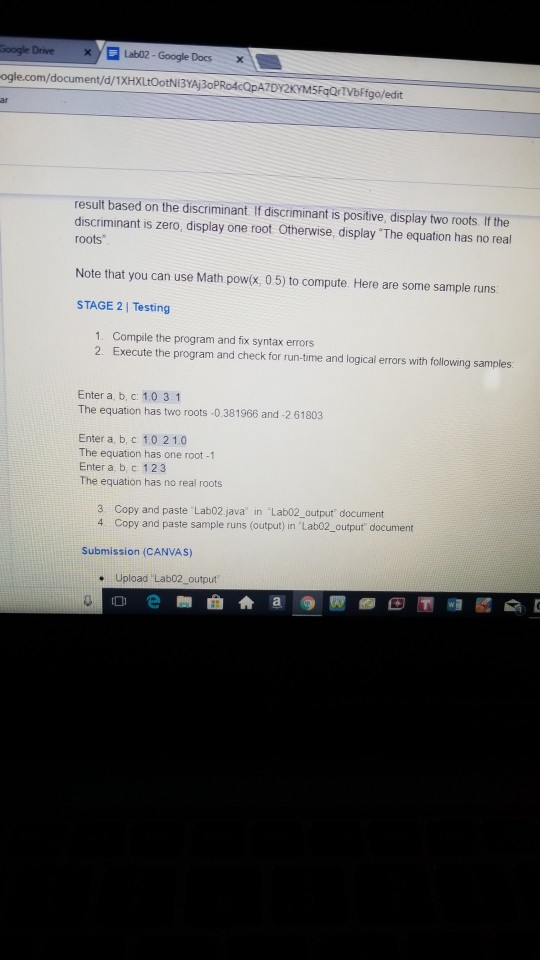Answered step by step
Verified Expert Solution
Question
1 Approved Answer
ve x Lab02-Google Docsx n/document/d/1XHXLtOotNI3YAj30PRo4cQpA7DY2KYM5FqQrTVbFfgo/edit The two roots of a quadratic equation ax2 + bx + c = 0 can be obtained using the following


ve x Lab02-Google Docsx n/document/d/1XHXLtOotNI3YAj30PRo4cQpA7DY2KYM5FqQrTVbFfgo/edit The two roots of a quadratic equation ax2 + bx + c = 0 can be obtained using the following formula b2 - 4ac is called the discriminant of the quadratic equation I it is positive, the equation has two real roots If it is zero the equation has one root if it is negative, the equation has no real roots. Write a program that prompts the user to enter values for a b and c and display the result based on the discriminant If discriminant is positive, display two roots If the discriminant is zero, display one root Otherwise, display The equation has no real roots Note that you can use Math pow(x 0 5) to compute Here are some sample runs STAGE 21 Testing 1 Compile the program and fix syntax errors Execute the program and check for run-time and logical errors with following sampies Enter a b, c 10 3 1 oe????@??E
Step by Step Solution
There are 3 Steps involved in it
Step: 1

Get Instant Access to Expert-Tailored Solutions
See step-by-step solutions with expert insights and AI powered tools for academic success
Step: 2

Step: 3

Ace Your Homework with AI
Get the answers you need in no time with our AI-driven, step-by-step assistance
Get Started


